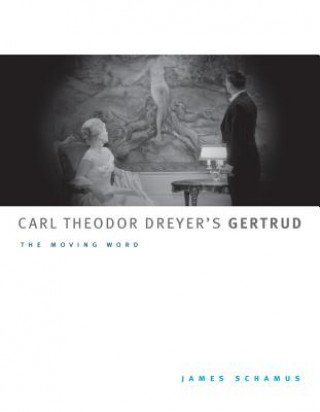
Kód: 04874793
Carl Theodor Dreyer's Gertrud
Autor James Schamus
If there is one film in the canon of Carl Theodor Dreyer that can be said to be, as Jacques Lacan might put it, his most "painfully enjoyable," it is "Gertrud". The film's Paris premier in 1964 was covered by the Danish press as a ... celý popis
- Jazyk:
 Angličtina
Angličtina - Väzba: Brožovaná
- Počet strán: 128
Nakladateľ: University of Washington Press, 2008
- Viac informácií o knihe

39.45 €

Skladom u dodávateľa v malom množstve
Odosielame za 10 - 14 dní
Potrebujete viac kusov?Ak máte záujem o viac kusov, preverte, prosím, najprv dostupnosť titulu na našej zákazníckej podpore.
Pridať medzi želanie
Mohlo by sa vám tiež páčiť
-

Wilhelm Singer
28 € -

Taste of Asia
29.53 € -

Tackling Complexity
57.75 € -
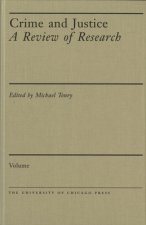
Crime and Justice
43.84 € -

Safety Cases and Safety Reports
293.57 € -
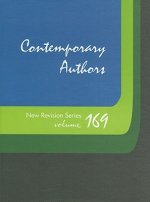
Contemporary Authors New Revision
692.85 € -
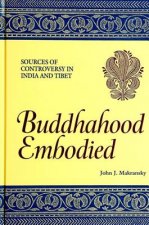
Buddhahood Embodied
53.55 € -

Accounting for Mother Nature
44.35 € -

Developmental Language Disorders
193.90 € -

Bullying Interventions in Schools
166.20 € -

Advancing Your Career
126.64 € -

Finite Element Method and Computational Structural Dynamics
40.98 € -

Kaufvertrag uber bewegliche Sachen im chinesischen Recht
87.70 € -

Kick Off, Akustik-Gitarre, 1 DVD
16.65 €
Darčekový poukaz: Radosť zaručená
- Darujte poukaz v ľubovoľnej hodnote, a my sa postaráme o zvyšok.
- Poukaz sa vzťahuje na všetky produkty v našej ponuke.
- Elektronický poukaz si vytlačíte z e-mailu a môžete ho ihneď darovať.
- Platnosť poukazu je 12 mesiacov od dátumu vystavenia.
Viac informácií o knihe Carl Theodor Dreyer's Gertrud
Nákupom získate 98 bodov
 Anotácia knihy
Anotácia knihy
If there is one film in the canon of Carl Theodor Dreyer that can be said to be, as Jacques Lacan might put it, his most "painfully enjoyable," it is "Gertrud". The film's Paris premier in 1964 was covered by the Danish press as a national scandal; it was lambasted on its release for its lugubrious pace, wooden acting, and old-fashioned, stuffy milieu. Only later, when a younger generation of critics came to its defence, did the method in what appeared to be Dreyer's madness begin to become apparent. To make vivid just what was at stake for Dreyer, and still for us, in his final work, James Schamus focuses on a single moment in the film. He follows a trail of references and allusions back through a number of thinkers and artists (Boccaccio, Lessing, Philostratus, Charcot, and others) to reveal the richness and depth of Dreyer's work - and the excitement that can accompany cinema studies when it opens itself up to other disciplines and media.Throughout, Schamus pays particular attention to Dreyer's lifelong obsession with the "real," developed through his practice of 'textual realism', a realism grounded not in standard codes of verisimilitude but on the force of its rhetorical appeal to its written, documentary sources. As do so many of the heroines of Dreyer's other films, such as "La Passion de Jeanne d'Arc" (1928), "Gertrud" serves as a locus for Dreyer's twin fixations: on written texts, and on the heroines who both embody and free themselves from them.Dreyer based "Gertrud" not only on Hjalmar Soderberg's play of 1906, but also on his own extensive research into the life of the 'real' Gertrud, Maria van Platen, whose own words Dreyer interpolated into the film. By using his film as a kind of return to the real woman beneath the text, Dreyer rehearsed another lifelong journey, back to the poor Swedish girl who gave birth to him out of wedlock and who gave him up for adoption to a Danish family, a mother whose existence Dreyer only discovered later in life, long after she had died.
 Parametre knihy
Parametre knihy
Zaradenie knihy Knihy po anglicky The arts Film, TV & radio Films, cinema
39.45 €
- Celý názov: Carl Theodor Dreyer's Gertrud
- Podnázov: The Moving Word
- Autor: James Schamus
- Jazyk:
 Angličtina
Angličtina - Väzba: Brožovaná
- Počet strán: 128
- EAN: 9780295988542
- ISBN: 0295988541
- ID: 04874793
- Nakladateľ: University of Washington Press
- Hmotnosť: 216 g
- Rozmery: 180 × 228 × 7 mm
- Dátum vydania: 18. August 2008
Obľúbené z iného súdka
-

Spiderman Into the Spider-Verse
34.85 € -20 % -

The Animator's Survival Kit
37.71 € -2 % -

Art of How to Train Your Dragon 2
41.29 € -8 % -

Art of Godzilla: King of the Monsters
30.04 € -21 % -

Art of Disney Postcards
19.11 € -13 % -

Art of Horror Movies
40.47 € -1 % -

Alien
38.12 € -23 % -

Columbo
78.80 € -

Reel Families
29.33 € -

Art of Fantastic Beasts: The Crimes of Grindelwald
42 € -14 % -

Puppet Master Complete
56.62 € -

Sound Effects Bible
24.32 € -19 % -

Star Wars The Complete Visual Dictionary New Edition
41.59 € -
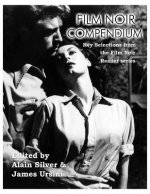
Film Noir Compendium
30.66 € -2 % -

The Art and Soul of Dune
49.36 € -20 % -

Alien: The Blueprints
32.70 € -23 % -

The Art of Princess Mononoke
31.37 € -21 % -

Of Walking In Ice
11.54 € -10 % -

Animator's Survival Kit
43.54 € -23 % -

Art of Mad Max: Fury Road
39.35 € -4 % -

Science of Dune
24.73 € -6 % -

Starting Point: 1979-1996
16.55 € -22 % -

Star Trek: Light-Up Starship Enterprise
12.56 € -9 % -

Eat What You Watch
16.35 € -21 % -

Jurassic Park
50.79 € -9 % -

The Art of Tangled
35.26 € -19 % -

Wes Anderson
30.96 € -21 % -

Walt Disney
17.78 € -17 % -

Story
30.25 € -15 % -

Interstellar
24.22 € -15 % -

Jonesy
11.13 € -23 % -

Making of Alien
49.26 € -19 % -

The Celestine Prophecy
11.44 € -21 % -

Sly Moves
21.87 € -19 % -

ISE Film Art: An Introduction
74.10 € -6 % -

Star Wars - the Jedi Path
18.70 € -23 % -

Mean Girls: The Burn Book Hardcover Ruled Journal
18.80 € -7 % -

The Illusion of Life : Disney Animation
59.48 € -2 % -

Ghostbusters: Proton Pack and Wand
12.56 € -9 % -

Donnie Darko Book
19.21 € -6 % -

The Star Wars Archives 1977–1983
200.75 € -5 % -

Alien: The Archive - The Ultimate Guide to the Classic Movies
38.12 € -23 % -

Filmmaker's Handbook, The (fifth Edition)
34.44 € -16 % -

Sofia Coppola
20.64 € -2 % -

Making of Aliens
49.98 € -17 % -

Lynch on Lynch
17.78 € -13 % -

Painting With Light
35.26 € -2 % -

Grammar of the Film Language
34.34 € -

Persona 5
33.21 € -18 %
Osobný odber Bratislava a 2642 dalších
Copyright ©2008-24 najlacnejsie-knihy.sk Všetky práva vyhradenéSúkromieCookies


 21 miliónov titulov
21 miliónov titulov Vrátenie do mesiaca
Vrátenie do mesiaca 02/210 210 99 (8-15.30h)
02/210 210 99 (8-15.30h)